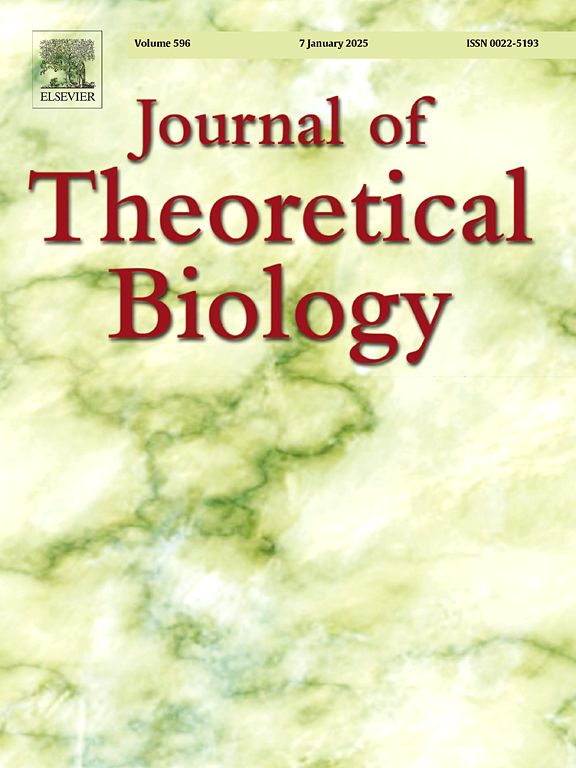Can pruning improve agent-based models’ calibration? An application to HPVsim
IF 1.9
4区 数学
Q2 BIOLOGY
引用次数: 0
Abstract
Agent-Based Models (ABMs) have gained popularity over the COVID-19 epidemic, but their efficient calibration remains challenging. Here we propose a novel calibration architecture by investigating the role of pruning in ABM calibration. We use a recently developed model for human papillomavirus (HPV) transmission and focus on its integrated calibration framework, Optuna. Simulating six synthetic datasets of various temporal skewness, with six pruners, we show that more aggressive pruners perform best (in terms of loss function at end of calibration) for very-back-heavy datasets, while median pruners are better for more-front-heavy datasets. For more balanced datasets most of the pruners perform similarly to no pruning. However, across all datasets pruning notably sped up calibration, in many cases without compromising on - or even improving upon - the optimal found parameter set. We validate our results through application to real-life data. Finally, we discuss approaches for improving “bad pruners” for balanced datasets. Our proof-of-principle study shows that pruners can improve ABMs’ calibration. As ABMs are becoming more widely used in epidemiological modelling, designing the next level of pandemic preparedness strategies will need to address efficient calibration; we believe pruning is a cornerstone for this.
修剪能改善基于智能体的模型的校准吗?HPVsim的应用。
基于主体的模型(ABMs)在COVID-19疫情中得到了普及,但其有效校准仍然具有挑战性。本文通过研究剪枝在ABM校正中的作用,提出了一种新的校正体系结构。我们使用最近开发的人类乳头瘤病毒(HPV)传播模型,并重点关注其集成校准框架Optuna。模拟6个具有不同时间偏度的合成数据集,使用6个修剪器,我们发现对于非常后重的数据集,更积极的修剪器表现最好(就校准结束时的损失函数而言),而对于更前重的数据集,中位数修剪器表现更好。对于更平衡的数据集,大多数修剪器的执行类似于不修剪。然而,在所有数据集中,修剪明显加快了校准速度,在许多情况下,没有损害-甚至改进-最优发现的参数集。我们通过应用于实际数据来验证我们的结果。最后,我们讨论了改善平衡数据集“坏修剪器”的方法。我们的原理验证研究表明,修剪器可以改善ABMs的校准。由于在流行病学建模中越来越广泛地使用ABMs,设计下一级大流行防范战略将需要解决有效校准问题;我们认为,修剪是实现这一目标的基石。
本文章由计算机程序翻译,如有差异,请以英文原文为准。
求助全文
约1分钟内获得全文
求助全文
来源期刊
CiteScore
4.20
自引率
5.00%
发文量
218
审稿时长
51 days
期刊介绍:
The Journal of Theoretical Biology is the leading forum for theoretical perspectives that give insight into biological processes. It covers a very wide range of topics and is of interest to biologists in many areas of research, including:
• Brain and Neuroscience
• Cancer Growth and Treatment
• Cell Biology
• Developmental Biology
• Ecology
• Evolution
• Immunology,
• Infectious and non-infectious Diseases,
• Mathematical, Computational, Biophysical and Statistical Modeling
• Microbiology, Molecular Biology, and Biochemistry
• Networks and Complex Systems
• Physiology
• Pharmacodynamics
• Animal Behavior and Game Theory
Acceptable papers are those that bear significant importance on the biology per se being presented, and not on the mathematical analysis. Papers that include some data or experimental material bearing on theory will be considered, including those that contain comparative study, statistical data analysis, mathematical proof, computer simulations, experiments, field observations, or even philosophical arguments, which are all methods to support or reject theoretical ideas. However, there should be a concerted effort to make papers intelligible to biologists in the chosen field.

 求助内容:
求助内容: 应助结果提醒方式:
应助结果提醒方式:


